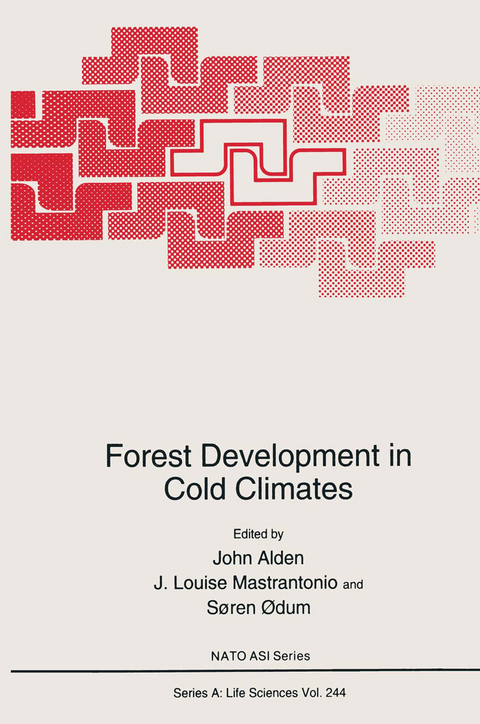
Forest Development in Cold Climates
Kluwer Academic/Plenum Publishers (Verlag)
978-0-306-44480-7 (ISBN)
Socioeconomic Importance of Forests in Iceland.- Biochemical and Physiological Requirements of Trees for Forest Development beyond Tree Limits.- Molecular Bases for Adaptation of Coniferous Trees to Cold Climates.- Growth and Development of Northern Forest Trees as Affected by Temperature and Light.- Testing Winter Desiccation Resistance for Species and Provenance Selection at Timberlines.- Growth of Mountain Birch (Betula Pubescens Ehrh.) in Response to Changing Temperature.- Performance of Mountain Birch in Different Environments in Sweden and Iceland: Implications for Afforestation.- Environmental Limitations of Forest Development at and beyond Tree Limits.- Causes of Alpine Timberline: A Review of the Hypotheses.- Physiology of Trees at Treeline.- Treeline in Relation to Climate, with Special Reference to Oceanic Areas.- Pliocene Fossil Nothofagus (Southern Beech) from Antarctica: Phytogeography, Dispersal Strategies, and Survival in High Latitude Glacial-Deglacial Environments.- Predicting Afforestation Success during Climatic Warming at the Northern Limit of Forests.- Climate Change as Seen by Trees and by Climate Modelers.- Effects of Wind on Boreal Forests.- Long-Term Biometeorological Monitoring at Two Forest Sites in Iceland and Newfoundland: Initial Results.- Potential Tree Species and Provenances for Forest Development in Cold Climates.- Genetic Diversity of Tree Populations at Their Arctic Limits.- Potential Species and Provenances for Forest Development in Cold Climates.- Species and Provenance Choice at Northern Tree Limits in Maritime Climates.- Seed Collections from North American Trees for Marginal Sites in the Nordic Countries.- The Uses of Lignoses in Horticulture in Iceland.- Provenance Selection, Testing, and Breeding to Accelerate Adaptation and Growth of Trees and Shrubs.- Accelerating Adaptation of Trees at Tree Limits by Selective Breeding.- Selection and Breeding of Scots Pine for Northern Sweden.- Provenance and Individual Variation in Climatic Hardiness of Scots Pine in Northern Finland.- Hybridization among Provenances of Lodgepole Pine.- Genetics, Cytogenetics, and Molecular Genetics of Icelandic Birch: Implications for Breeding and Reforestation.- Chloroplast DNA Diversity, Phylogenetics, and Hybridization in Picea.- Genetic Variation in Early Frost Tolerance of Spruce from Northwestern North America.- Case Histories of Forest Development beyond Tree Limits.- History of Tree Planting on the Aleutian Islands.- Afforestation of Lutz Spruce, Sitka Spruce, and Norway Spruce in the Vesteraalen Islands, Norway.- Development of an Environmental Forest and Arboretum on the Outer Coast of Finnmark County, Norway.- Forest Development in Iceland.- Potential Treeline in the Faroe Islands.- Forest Trials at High Elevations in Britain.- Wind and Wave Forests: A Case Study and Implications for Silviculture.- The Alpine Timberline of Tibet.- Forestry in New Zealand’s Southern High Country.- Summaries of Working Group Sessions.- Species Index.
| Erscheint lt. Verlag | 30.6.1993 |
|---|---|
| Reihe/Serie | Nato Science Series: A ; 244 |
| Zusatzinfo | XIV, 570 p. |
| Verlagsort | New York |
| Sprache | englisch |
| Maße | 156 x 234 mm |
| Themenwelt | Naturwissenschaften ► Biologie ► Botanik |
| Weitere Fachgebiete ► Land- / Forstwirtschaft / Fischerei | |
| ISBN-10 | 0-306-44480-1 / 0306444801 |
| ISBN-13 | 978-0-306-44480-7 / 9780306444807 |
| Zustand | Neuware |
| Haben Sie eine Frage zum Produkt? |
aus dem Bereich


